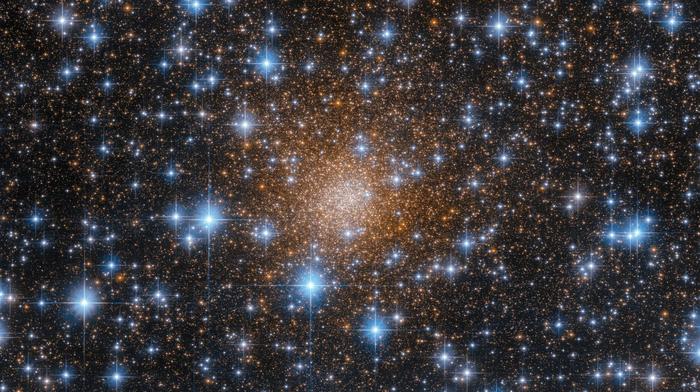The Flatiron Institute is making significant strides in ensuring the future of MESA, a groundbreaking open-source software suite that has remarkably impacted how researchers model the evolution of stars. This commitment is part of its broader mission to advance our understanding of the universe through sustained support for the astrophysics community. The MESA software, an acronym for Modules for Experiments in Stellar Astrophysics, has revolutionized the field since its inception in 2011. By providing tools for simulating stellar evolution, it enables researchers to delve deeper into the processes that govern stellar life cycles.
With the retirement of MESA’s original creator, Bill Paxton, there was a looming question about the software’s future, especially concerning its maintenance and ongoing development. However, the Flatiron Institute’s Center for Computational Astrophysics (CCA) has risen to the occasion. By hiring Philip Mocz as a full-time software engineer, the CCA aims to ensure that MESA continues its trajectory of growth and relevance within the astrophysical community. The collaboration signifies a fresh chapter for the software, with renewed dedication to nurturing and expanding its capabilities.
Philip Mocz emphasized the revolutionary role MESA has played in astronomy. His assertion that “Open source means open science” underlines the vital role of collaborative software development in scientific research. This ethos underpins MESA’s progress, as many contributors from around the world have collaborated on the software, leading to its widespread adoption. With support from the Flatiron Institute, the initiative is set to bolster MESA’s infrastructure, fostering a vibrant environment for developing new features that meet contemporary research demands.
The significance of MESA is reflected in its adoption, with over 1,000 astrophysicists utilizing it for stellar research. The ability to model the life cycles of stars has resulted in thousands of scientific publications, making it an essential tool for modern astrophysics. The publications citing MESA’s capabilities have exceeded 12,000, showcasing how central the software has become to the astrophysical research landscape. Such extensive use underscores MESA’s integral role in facilitating groundbreaking discoveries in stellar physics.
Mocz’s arrival at CCA indicates a seamless transition of the MESA project as it becomes centered at the Flatiron Institute. The additional support from the CCA not only strengthens MESA’s future but also encourages ongoing community engagement. The developers working on MESA — a dedicated team of volunteers — have been foundational in ensuring its sustained success, from its conception to its current state. Their commitment is evident in the consistent updates and improvements they provide to the software, which remains a vital resource for researchers navigating the complexities of stellar evolution.
Bill Paxton, reflecting on MESA’s impact, acknowledged the unforeseen growth and scientific significance of the project. His vision materialized into a potent tool that has contributed immensely to our understanding of stellar physics. The collaborative nature of the project is crucial, with the CCA working alongside MESA’s developers to ensure that the software remains responsive to the evolving needs of the astrophysics community. This cooperative model promotes innovation and supports the development of new features that address contemporary scientific questions.
Tools such as MESA are increasingly critical in the face of an overwhelming influx of observational data from advanced telescopes and satellites. As discoveries related to stars accrue, researchers need robust computational models to transform raw observations into insightful conclusions about stellar behavior and characteristics. MESA provides a sophisticated one-dimensional framework to understand the intricate physics underpinning stellar evolution, indispensable for modern astronomers.
Matteo Cantiello of the CCA emphasized that modern stellar physics necessitates more than just one-dimensional evolutionary calculations. The demand for comprehensive models that integrate both 1D calculations and high-resolution 3D simulations is paramount. MESA’s architecture uniquely positions it to serve as a connector between these dimensions, facilitating a more thorough understanding of stellar dynamics.
Cantiello’s insight hints at a broader imperative: as astrophysical observations become more complex and nuanced, the tools to analyze them must evolve accordingly. The integration of MESA with multidimensional approaches is not merely beneficial; it is essential for bridging the gap between theoretical predictions and observed phenomena. The synergy between different modeling modalities enables researchers to gain deeper insights into stellar behavior and the fundamental laws governing the universe.
As MESA embarks on this new phase under the stewardship of the Flatiron Institute, the astrophysical community stands at the threshold of exciting possibilities. With Mocz’s expertise and the unwavering dedication of the developers, MESA is poised to continue its legacy of impacting stellar physics profoundly. The commitment to maintaining an open-source ethos will further ensure that knowledge remains accessible to all, fostering an era of collaborative scientific inquiry.
In conclusion, the future of stellar research is increasingly intertwined with advanced computational tools like MESA. Its evolution reflects the collective effort of a global community of scientists who strive to uncover the mysteries of the cosmos. The Flatiron Institute’s backing represents a promising leap forward, ensuring that as we gaze into the depths of space, we do so with the best tools available at our disposal, ready to unlock the secrets of the stars.
Subject of Research: Stellar Evolution and Computational Astrophysics
Article Title: Flatiron Institute Secures Future of MESA Software, Paving the Way for Stellar Research
News Publication Date: October 2023
Web References: https://www.simonsfoundation.org/flatiron/?swcfpc=1, https://docs.mesastar.org/en/latest/
References: Not Applicable
Image Credits: Credit: ESA/Hubble & NASA, F. Ferraro
Keywords
Stellar evolution, Computational physics, Astrophysics, Astronomy, MESA software, Stellar dynamics, Open-source science, Computational modeling, Stellar research, Space sciences, Scientific collaboration, Advanced telescopes.
Tags: astrophysics community supportBill Paxton retirement impactcollaboration in scientific developmentcomputational astrophysics advancementsFlatiron Institutefuture of astrophysical softwareMESA software suiteModules for Experiments in Stellar Astrophysicsopen-source astronomy toolsPhilip Mocz software engineerstellar evolution modelingstellar life cycles research





